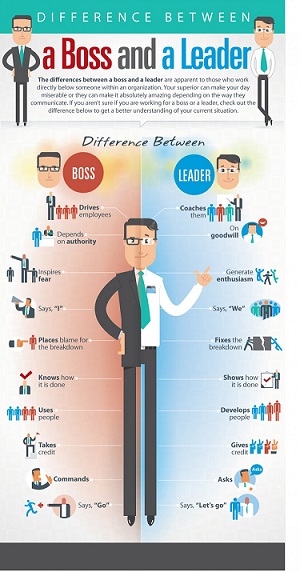 There can be many bad leaders in one organization. Why? Ironically, it’s because bad leadership creates a vicious cycle. Bad leaders promote other bad leaders, either because they don’t know any better or they don’t want to be found out. If you’re a kick-ass doer in an organization full of bad leaders, you won’t get promoted for one of two reasons.
There can be many bad leaders in one organization. Why? Ironically, it’s because bad leadership creates a vicious cycle. Bad leaders promote other bad leaders, either because they don’t know any better or they don’t want to be found out. If you’re a kick-ass doer in an organization full of bad leaders, you won’t get promoted for one of two reasons.
- They don’t know how to replace you! You continue making them look good in your current role, so they continue taking the credit. If they promote you, they’ll either have to find someone just as good, start looking bad, or have to do some work themselves.
- They worry you’ll threaten their position. Bad leaders usually feel insecure and inadequate. The more senior you get, the more you’ll expose their ineptness (even if you don’t plan on it).
Working for a bad leader is a nightmare for your career and health. The earlier you identify them, the sooner you can plan your next career move.
Recognizing Bad Leadership
Many infographics illustrate the difference between a boss (a.k.a bad leaders) and a true leader. A popular one is shown above, and you can find another one here. These graphics are helpful, but either too vague or have too much information. Let’s make it more practical with 5 early signs of bad leadership.
Sign #1: They don’t walk the walk.
I used to work for someone that loved to talk about leadership and mentoring others. She knew all the buzzwords and knew how to describe a good mentor. However, she never did anything. She just wanted to be known as a good mentor without actually mentoring anyone.
Bad leaders always say one thing but do another. If someone does this once, maybe it’s a misunderstanding. If you can identify three occasions where this person said one thing but did another, you have a bad leader.
Sign #2: They use subtly belittling language.
Good leaders appreciate your strengths and help you improve on your weaknesses. Bad leaders highlight your weaknesses frequently so they can feel superior. This sign isn’t always obvious, so trust your gut. If you often feel demotivated after meeting with your boss, he or she is a bad leader.
Sign #3: They’re a sensitive know-it-all.
Good leaders love hiring smart people. They appreciate constructive feedback and know they don’t know everything. Bad leaders are scared of smart people. They want unquestioning support and are secretly offended and scared by disagreement.
This sign isn’t always easy to identify. Even bad leaders say they want everyone’s input. But, if any combination of the following occurs, they definitely don’t welcome feedback:
- Your input never sees the light of day.
- They gradually stop seeking your input.
- You can never question their leadership style.
- They always need to have the last word.
Sign #4: They don’t give the benefit of the doubt.
Good leaders protect and promote their teams. Bad leaders protect and promote themselves, especially when something bad happens. This is the most obvious sign of bad leadership. You have a bad leader if…
- You’re blamed without having a chance to defend yourself.
- Your leader cares more about blaming than fixing.
- Your leader makes you fix the whole problem.
Sign #5: They use self-important, hierarchical language.
Great leaders are humble: they don’t make you feel like juniors and you’re honored to spend time with them. Bad leaders love pulling out the rank card. When you hear anything like the following, you have a bad leader:
- “I can only have regular meetings with my directs. As for my “two downs,” I may be able to do every other month but I’ll have to see how to fit it all in.”
- “You have the worst timing, asking me this right now. Can’t you see I’ve been traveling too much? You really need to work on your timing.”
- “I didn’t ask you for anything else. I can’t believe you didn’t do this one thing I asked.”
What To Do About Bad Leadership
I’ve encountered my fair share of bad leadership over the last 20 years. I didn’t always recognize it immediately, but once I did, there were only two options:
- Watch your department’s political trends. If you’re certain that this leader will be ousted soon, stay put, promote your work brand with a broad network, and let them move on. If you’re not sure how long they’ll be around, leave quickly. Bad leaders will wreck your career and your confidence.
- Look for a new job. Not all departments or lines of business are created equally. You may find great leadership in another department, so don’t be afraid to look elsewhere in your company. If you’re thinking of moving to a different company, look before you jump. Research a company’s leadership on Linkedin or Glassdoor so you can make an informed decision.
Encountering bad leadership is inevitable, but you can recognize it quickly and take action. Your career, health, and confidence will thank you for it.
Your comments: What’s another practical sign of bad leadership? What else would you do if you encountered a bad leader? Share your thoughts below.
Like this article? Help me by sharing it on Linkedin, Twitter, Facebook, or Google+.
First time on BMCC? Start here: How to Succeed Like an Executive.
Best wishes to your success,
Lei